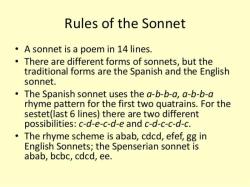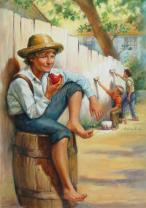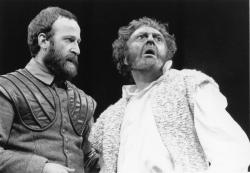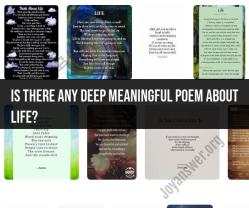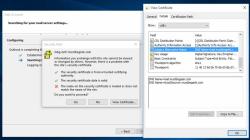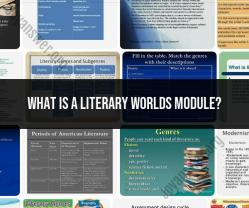How to analyze a literary work?
Analyzing a literary work involves examining the various elements of the text to gain a deeper understanding of its themes, characters, plot, and literary techniques. Here's a step-by-step guide to help you analyze a literary work effectively:
Read the Text Thoroughly:
- Start by reading the text carefully. Pay attention to details, and take notes as you read. Make sure you understand the plot and characters.
Identify the Genre and Style:
- Determine the genre of the literary work (e.g., novel, short story, poem, drama). Identify the author's writing style, tone, and use of language.
Understand the Plot:
- Summarize the plot, including the exposition, rising action, climax, falling action, and resolution. Consider the main events and their significance to the story.
Character Analysis:
- Analyze the characters in the text. Consider their personalities, motivations, and development throughout the story. Pay attention to how the author describes and portrays them.
Setting and Time Period:
- Examine the setting of the story, including the time period, location, and its significance to the narrative. Think about how the setting influences the characters and events.
Themes and Motifs:
- Identify the central themes and motifs in the literary work. Think about what the author is trying to convey or explore through the story.
Symbolism and Imagery:
- Look for symbols and imagery used in the text. Consider what they represent and how they contribute to the meaning of the work.
Literary Techniques:
- Pay attention to the author's use of literary techniques such as symbolism, foreshadowing, irony, metaphor, simile, and alliteration. Analyze how these techniques enhance the text.
Narrative Point of View:
- Determine the narrative point of view (first-person, third-person, etc.) and consider how it affects your understanding of the story.
Structure and Organization:
- Analyze the structure and organization of the text. Look at how chapters or sections are arranged and whether the author uses flashbacks or non-linear storytelling.
Character Relationships:
- Consider the relationships between characters and how they influence the plot and character development.
Critical Theories and Context:
- Depending on the literary work, you can apply different critical theories (e.g., feminist, Marxist, postcolonial) to gain different perspectives on the text. Additionally, consider the historical and cultural context in which the work was written.
Author's Background:
- Research the author's background and life experiences, as this can provide insights into their motivations for writing the text.
Reader Response:
- Reflect on your personal response to the literary work. Consider how your own experiences and beliefs affect your interpretation of the text.
Write an Analysis:
- Organize your thoughts and findings into a coherent analysis. Start with an introduction that provides context and a thesis statement. Then, discuss each aspect you've analyzed in separate paragraphs. Provide evidence from the text to support your interpretations.
Conclusion:
- Summarize your main points and restate your thesis. Offer a final interpretation of the literary work and its significance.
Proofread and Edit:
- Review your analysis for clarity, coherence, and grammar. Make sure your analysis is well-structured and free of errors.
Remember that literary analysis can be subjective, and different readers may have different interpretations of the same text. Your analysis should be well-supported with evidence from the text, and it's valuable to engage with different perspectives and interpretations to develop a comprehensive understanding of the literary work.
Analyzing a Literary Work: Step-by-Step Approach
Literary analysis is the process of examining a literary work to understand its meaning and significance. It involves close reading, critical thinking, and the application of literary theories and concepts.
Here is a step-by-step approach to analyzing a literary work:
- Read the work carefully and multiple times. This will help you to develop a deep understanding of the text and to identify its key elements.
- Identify the main theme(s) of the work. What is the author trying to say about the human condition, society, or the world?
- Analyze the characters. What are their motivations, conflicts, and development? How do they contribute to the overall meaning of the work?
- Examine the setting and symbolism. How does the setting contribute to the mood and atmosphere of the work? What symbolic meaning does the author use?
- Consider the author's style and technique. How does the author use language, structure, and other literary devices to create the desired effect?
Once you have completed these steps, you can begin to write your literary analysis. Be sure to support your claims with evidence from the text and to provide your own insights and interpretations.
The Art and Importance of Literary Analysis
Literary analysis is an art and a skill that can be developed with practice. It is a valuable tool for understanding and appreciating literature. Literary analysis can also help us to better understand ourselves and the world around us.
Methods and Techniques for Effective Literary Analysis
There are a number of different methods and techniques that can be used for effective literary analysis. Some of the most common include:
- Close reading: This involves carefully examining the text, paying attention to the author's word choice, sentence structure, and other literary devices.
- Historical criticism: This involves placing the work in its historical context and examining the author's influences.
- Biographical criticism: This involves examining the author's life and experiences to see how they may have influenced the work.
- Formalist criticism: This focuses on the formal elements of the work, such as its structure, language, and imagery.
- Thematic criticism: This focuses on the themes of the work and how they are explored.
Interpreting Themes, Characters, and Symbolism in Literature
When interpreting themes, characters, and symbolism in literature, it is important to consider the following:
- Themes: Themes are the central messages or ideas that a literary work explores. They can be universal, such as love, loss, and redemption, or they can be more specific to the work itself.
- Characters: Characters are the people or creatures who inhabit a literary work. They can be realistic, symbolic, or archetypal.
- Symbolism: Symbolism is the use of objects, characters, or events to represent something else. Symbols can be used to add meaning and depth to a literary work.
Writing Compelling and Insightful Literary Analyses
To write compelling and insightful literary analyses, keep the following tips in mind:
- Have a clear thesis statement. Your thesis statement should state the main argument or insight of your analysis.
- Support your claims with evidence from the text. Use specific examples and quotations from the text to support your claims.
- Provide your own insights and interpretations. Don't simply summarize the text. Offer your own thoughts and analysis.
- Write clearly and concisely. Avoid using jargon and overly complicated language.
By following these tips, you can write literary analyses that are both informative and engaging.


